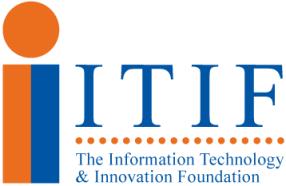 With unemployment north of 10 percent, there is renewed interest in a job creation agenda. But many of the proposals put forth to date overlook two key sources of job growth going forward: exports and innovation. An increase in sales from exports creates twice as many jobs as a dollar in sales from domestic demand, and jobs in technology firms can spur greater multipliers, creating even more jobs. Moreover, exporting firms pay 9 percent more than jobs in firms that export less while jobs in technology industries pay 90 percent more than other jobs. This ITIF WebMemo proposes nine ideas that can drive not only job growth in the short run, but competitiveness and innovation in the long run.
With unemployment north of 10 percent, there is renewed interest in a job creation agenda. But many of the proposals put forth to date overlook two key sources of job growth going forward: exports and innovation. An increase in sales from exports creates twice as many jobs as a dollar in sales from domestic demand, and jobs in technology firms can spur greater multipliers, creating even more jobs. Moreover, exporting firms pay 9 percent more than jobs in firms that export less while jobs in technology industries pay 90 percent more than other jobs. This ITIF WebMemo proposes nine ideas that can drive not only job growth in the short run, but competitiveness and innovation in the long run.
- Stop defending the dollar.
- Expand funding for trade enforcement at USTR.
- Temporarily expand funding for federal and state export assistance programs.
- Provide incentives for companies bringing back work from offshore to high unemployment areas.
- Provide a bonus R&D tax credit for 2010 and 2011.
- Allow IT investments to be expensed in 2010.
- Provide $500 million to universities that invest in needed research infrastructure in 2010.
- Allocate $1 billion for grants to support private sector researchers to take 18 month sabbaticals in universities or federal laboratories.
- Provide funding of $2 billion to state economic development agencies to help high-growth businesses start and grow.
While economic growth may finally be recovering, most economic forecasts suggest that job creation will lag behind and that it will be at least several years before the U.S. economy regains full employment. The human and economic costs of this lag are likely to be significant. As such, Congress and the Administration should take steps now to reduce unemployment and create jobs.
But they should do so in a way that also spurs long-term innovation and competitiveness. For there is compelling argument that can be made that it was the lack of innovation and competitiveness in the U.S. economy in this decade that made the crisis worse than it would otherwise be, for the lack of innovation-based investment opportunities meant that hundreds billions of dollars (much coming from China) went into subprime mortgages and other largely unproductive investments, many of which defaulted. At some point this immediate business cycle-based economic crisis will pass and the United States will then be confronted with only one economic crisis – a structural competitiveness one where we are losing ground rapidly to other nations in innovation-based economic activity. As such, Congress and the Administration need to also begin to give thoughtful attention to long-run competitiveness/employment issues (e.g. technology policy, education, strategic investments, etc.) that can help prevent our nation from finding itself in similar employment crises in the future.

